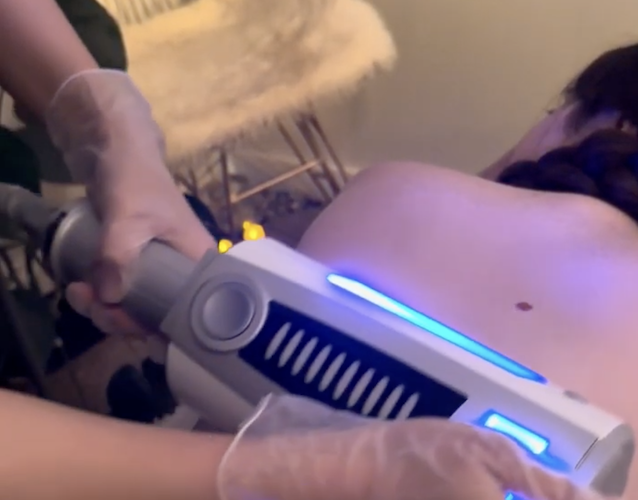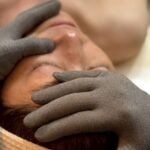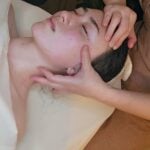Discover the key differences between innovative endospheres therapy and hands-on traditional massage techniques to determine which treatment best suits your wellness goals and lifestyle needs.
When it comes to body wellness and therapeutic treatments, the choice between cutting-edge technology and time-tested methods can feel overwhelming. Two popular options that often come up in spa discussions are endospheres therapy and traditional massage. Both offer unique benefits for relaxation, pain relief, and overall well-being, but they work in fundamentally different ways.
Understanding the distinctions between these treatments will help you make an informed decision about which approach aligns best with your specific health goals, lifestyle, and preferences. Let’s explore both options in detail to guide your choice.
What Is Endospheres Therapy?
Endospheres therapy represents a revolutionary approach to body treatment that combines mechanical stimulation with lymphatic drainage principles. This innovative technology uses a specialized device equipped with rotating spheres that create a unique compression and decompression action on the skin and underlying tissues.
The treatment works by stimulating microcirculation, promoting lymphatic drainage, and encouraging the natural elimination of toxins from the body. The mechanical action of the spheres creates a rhythmic massage-like sensation while targeting specific areas with precision and consistency that human hands cannot replicate.
During an endospheres session, the device glides over the treatment area, creating a wave-like motion that penetrates deep into the tissue layers. This process helps break down fatty deposits, reduce fluid retention, and improve skin texture and tone. The treatment is particularly effective for addressing cellulite, improving circulation, and supporting the body’s natural detoxification processes.
Traditional Massage: The Time-Tested Approach
Traditional massage therapy has been practiced for thousands of years across various cultures, making it one of the oldest healing arts known to humanity. This hands-on approach involves the manipulation of soft tissues using various techniques including kneading, stroking, tapping, and applying pressure to specific points on the body.
The human touch element in traditional massage provides both physical and emotional benefits. Skilled massage therapists can adjust pressure, technique, and focus areas based on real-time feedback from clients, creating a personalized experience that responds to individual needs and preferences.
Traditional massage encompasses numerous styles, from Swedish massage focusing on relaxation to deep tissue work targeting chronic muscle tension. Each technique offers specific benefits, whether it’s stress reduction, pain management, improved flexibility, or enhanced athletic performance.
Key Differences in Treatment Approach
The fundamental difference between these treatments lies in their methodology and application. Endospheres therapy relies on consistent, mechanical stimulation that delivers uniform pressure and rhythm throughout the session. This technological approach ensures reproducible results and can target specific areas with mathematical precision.
Traditional massage, conversely, offers the irreplaceable benefit of human intuition and adaptability. A skilled therapist can sense tension patterns, adjust techniques mid-session, and provide emotional support through therapeutic touch. This personalized approach allows for real-time modifications based on client feedback and the therapist’s assessment of tissue conditions.
The treatment experience also differs significantly. Endospheres sessions typically follow a structured protocol with predetermined settings and duration, while traditional massage can be completely customized in terms of pressure, technique, and focus areas based on immediate needs and preferences.
Effectiveness for Specific Conditions
When it comes to lymphatic drainage and circulation improvement, endospheres therapy shows remarkable effectiveness. The mechanical action specifically targets the lymphatic system, making it particularly beneficial for individuals dealing with fluid retention, post-surgical swelling, or circulation issues. The National Center for Biotechnology Information has documented various studies on mechanical lymphatic drainage techniques and their effectiveness.
For cellulite reduction and body contouring, endospheres therapy often produces more visible results due to its ability to break down fatty deposits and improve skin texture through consistent mechanical stimulation. The treatment’s precision allows for targeted work on problem areas that might be difficult to address effectively with manual techniques alone.
Traditional massage excels in areas requiring nuanced touch and emotional connection. For stress relief, anxiety reduction, and general relaxation, the human element in traditional massage provides irreplaceable benefits. The therapeutic relationship between client and therapist contributes significantly to the overall healing experience.
Chronic pain conditions often respond well to traditional massage because therapists can identify trigger points, assess muscle tension patterns, and apply varying pressure techniques based on individual pain tolerance and response. This adaptability makes traditional massage particularly effective for complex pain management scenarios.
Treatment Duration and Frequency
Endospheres therapy sessions typically range from 30 to 60 minutes, depending on the treatment area and specific goals. The mechanical nature of the treatment allows for efficient coverage of large areas in relatively short timeframes. Most practitioners recommend a series of sessions spaced one to two weeks apart for optimal results, particularly for body contouring and cellulite reduction goals.
Traditional massage sessions can vary widely in duration, from quick 30-minute focused treatments to comprehensive 90-minute full-body sessions. The frequency depends on individual needs, with some clients benefiting from weekly sessions for ongoing stress management, while others may require more intensive treatment schedules for specific conditions.
The cumulative effects of both treatments build over time, but they follow different patterns. Endospheres therapy often shows more rapid visible changes in skin texture and circumference measurements, while traditional massage benefits tend to be more gradual and holistic, affecting overall well-being and stress levels.
Comfort and Client Experience
The comfort level during endospheres therapy varies among individuals. Some clients find the mechanical stimulation deeply relaxing and meditative, while others may need time to adjust to the unique sensation. The treatment is generally well-tolerated, with most clients describing it as a deep, rhythmic massage sensation.
Traditional massage comfort depends largely on the therapist’s skill and the client’s communication about pressure preferences. The ability to provide immediate feedback and have techniques adjusted in real-time makes traditional massage highly customizable for comfort levels.
Privacy considerations may also influence choice. Endospheres therapy can often be performed with minimal undressing, depending on the treatment area, while traditional massage typically requires more extensive undressing for effective treatment.
Cost Considerations and Value
Investment in either treatment should be viewed in terms of both immediate costs and long-term value. Endospheres therapy sessions may have higher individual session costs due to the specialized equipment and technology involved, but they often require fewer sessions to achieve visible results for specific goals like cellulite reduction or lymphatic drainage.
Traditional massage may have lower per-session costs but might require more frequent treatments for maintenance of benefits, particularly for stress management and general wellness goals. However, the holistic benefits of traditional massage often extend beyond the physical, providing emotional and psychological value that’s difficult to quantify.
Consider your specific goals when evaluating cost-effectiveness. If you’re seeking targeted body contouring results, endospheres therapy might provide better value despite higher individual session costs. For ongoing stress management and general wellness, traditional massage might offer better long-term value through its comprehensive benefits.
Making Your Decision
Choosing between endospheres therapy and traditional massage ultimately depends on your specific goals, preferences, and lifestyle factors. Consider endospheres therapy if you’re primarily interested in lymphatic drainage, cellulite reduction, circulation improvement, or body contouring with measurable results.
Traditional massage might be your better choice if you value human connection, need stress relief, prefer customizable treatments, or are dealing with complex pain patterns that require adaptive techniques. Many clients find that alternating between both treatments or combining them in their wellness routine provides comprehensive benefits.
The American Massage Therapy Association provides extensive resources on traditional massage benefits, while emerging research continues to document the effectiveness of mechanical lymphatic drainage techniques.
Consider starting with a consultation at a reputable spa that offers both treatments. Professional assessment of your specific needs, health history, and goals can provide personalized guidance for making the best choice for your wellness journey.
Remember that both treatments can be valuable components of a comprehensive wellness routine. The key is understanding which approach aligns best with your immediate needs and long-term health goals, ensuring you receive maximum benefit from your investment in professional body care.



